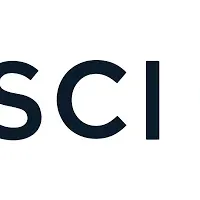
Steady Growth in U.S. Auto Insurance Demand Indicates Consumer Confidence and Market Dynamics
Auto Insurance Shopping Trends in the U.S.
In the first quarter of 2025, the LexisNexis® Risk Solutions U.S. Insurance Demand Meter reported an impressive growth in auto insurance shopping, maintaining the trend of elevated activity seen in recent months. According to the report, auto insurance shopping surged by 16% compared to last year, while new policy growth achieved a remarkable 8.4%. These figures demonstrate the resilience and ongoing momentum within the sector, even as they represent a slight cooling from the record-setting activity of the previous quarter.
Rise in Shopping Activity
As of March 31, 2025, it was noted that 46% of all policies in force had been shopped at least once over the past 12 months, affirming the dynamic nature of the current market. This active shopping behavior was significantly influenced by external factors such as tax season, which often prompts consumers to reassess their financial commitments, including insurance policies. The increase in new vehicle purchases also contributed to the rise, as consumers aimed to secure competitive rates prior to the anticipated impacts of new tariffs on imported goods.
Age Demographics and Shopping Behavior
Interestingly, the data indicates that older adults, particularly those aged 66 and older, are leading the charge in auto insurance shopping this year, demonstrating a notable 19.7% increase in their shopping activity. Traditionally viewed as a low-risk demographic for churn, older consumers are now displaying a heightened sensitivity to rates, driven by the economic pressures of living on fixed incomes. In contrast, the 26-35 age group showed the least growth at just over 13%, highlighting a shift in the market dynamics.
Influences on Market Activity
Factors such as increased economic pressures and changes in marketing strategies appear to influence these shifts in consumer behavior. Jeff Batiste, a senior vice president at LexisNexis Risk Solutions, explained that consumers are making insurance shopping decisions influenced by macroeconomic forces and personal financial factors, including tax refunds and the perceived need to act before potential cost increases from tariffs materialize.
The report further illustrates that the direct distribution channel, which includes online platforms, is becoming increasingly popular, boasting a 34% year-over-year increase in usage across all age groups. Meanwhile, the non-standard market segment also saw significant growth, fueled by an influx of uninsured shoppers aiming to take advantage of tax refunds.
Stability and Retention Challenges
Despite the growth in shopping and new policy acquisitions, retention rates for existing policies have dimmed in recent months. Currently, the average policy retention rate sits at 78%, down from 83% in early 2022. This decline in customer loyalty is particularly concerning for insurers as they face the challenge of sustaining growth amid increasing churn rates. Notably, the data reveals that around six million more policies are changing hands annually compared to just a few years ago.
Looking Ahead
As the markets prepare for potential tariff implications that could reshape consumer purchasing patterns, confidence remains high. LexisNexis notes that while the complete impacts of these changes may take time to materialize, the proactive behavior exhibited by consumers today may set the stage for continued activity across both auto and home insurance markets.
Overall, the findings from the U.S. Insurance Demand Meter present an intricate portrait of a market in transition, driven by changing consumer behavior and preferences. Insurers must adapt to these dynamics, refining their strategies for customer acquisition and retention in order to navigate the challenges and opportunities ahead.
For further insights, download the full LexisNexis U.S. Insurance Demand Meter for an in-depth analysis of consumer behavior trends.
Topics Financial Services & Investing)










【About Using Articles】
You can freely use the title and article content by linking to the page where the article is posted.
※ Images cannot be used.
【About Links】
Links are free to use.